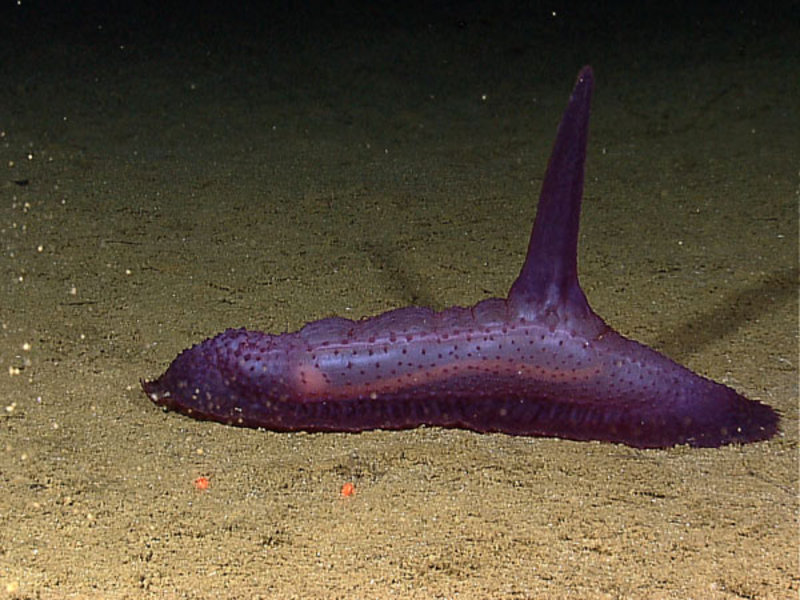
A purple sea cucumber with a high “spike” protruding from its dorsal section. Image courtesy of the NOAA Office of Ocean Exploration and Research, INDEX-SATAL 2010. Download larger version (jpg, 1.7 MB).

A purple sea cucumber with a high “spike” protruding from its dorsal section. Image courtesy of the NOAA Office of Ocean Exploration and Research, INDEX-SATAL 2010. Download larger version (jpg, 1.7 MB).
Sea Cucumber
A purple sea cucumber with a high “spike” protruding from its dorsal section. Video captured by the Little Hercules ROV on a site referred to as "Memeridge" on August 4, 2010. Video courtesy of NOAA Okeanos Explorer Program, INDEX-SATAL 2010. Download (mp4, 28.0 MB)
Dive number 12 took place on a mound feature referred to as “Memeridge”. We started this dive by transiting upslope on the northeastern margin of this mound feature. Once we reached the top, we moved along the crest to the south until dive time ran out. The seafloor at this site was mostly covered with a thick layer of smooth sediment. Extremely low abundances and diversity of megafauna (animals visible with the naked eye) were observed. Little evidence of bioturbation was observed. Xenophyophores and gromiids were the dominant fauna on the sediments, with few sea cucumbers observed. No hard substrates were seen. An exception to the lack of epibenthic megafauna (animals on the seafloor visible with the naked eye) was found on multiple organic falls of plant debris that were somewhat frequently seen. The most common objects were tree trunks and coconut shells. High abundances of organisms were observed on these wood falls. Animals associated with these hot-spots included squat lobsters, urchins, serpulid worms and gastropods.